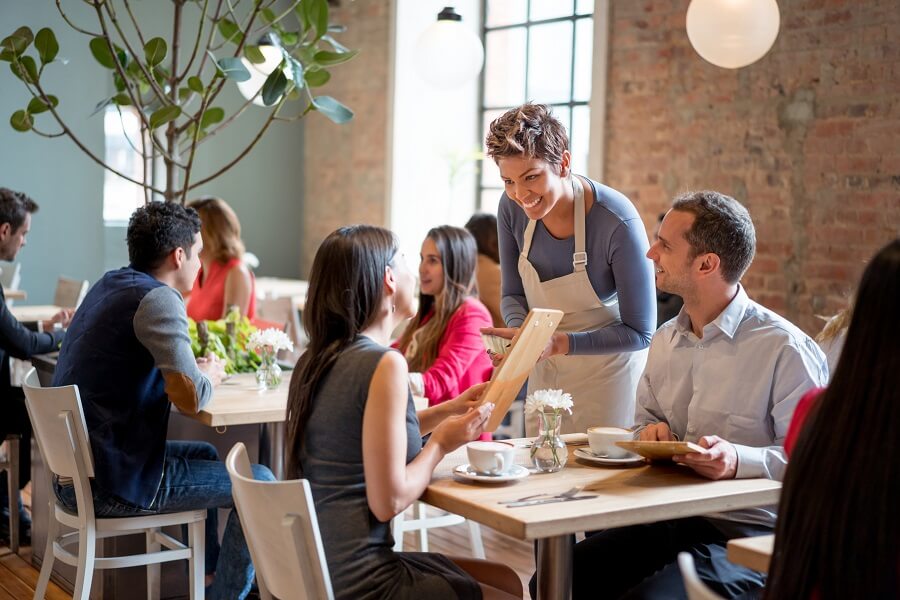Reading time: 6 minutes
As a restaurant owner, you’re selling a meal and a tangible experience customers will value and remember. Food brings people together, which is why restaurant marketing is so unique from other businesses.
Whether you’re a new restaurant or a veteran in the biz, you’ll have people drooling over your dishes in no time. Read through our guide or jump to the infographic for data-driven tips to market your restaurant in the best way possible.
1. Make Online Orders Easy
Among the top features guests look for when choosing a restaurant are convenience and the ability to order online via a mobile-responsive website.
Online ordering should be effortless. Domino’s has mastered the process. It streamlines ordering through every channel. You can place an order by phone, the website or through its app.
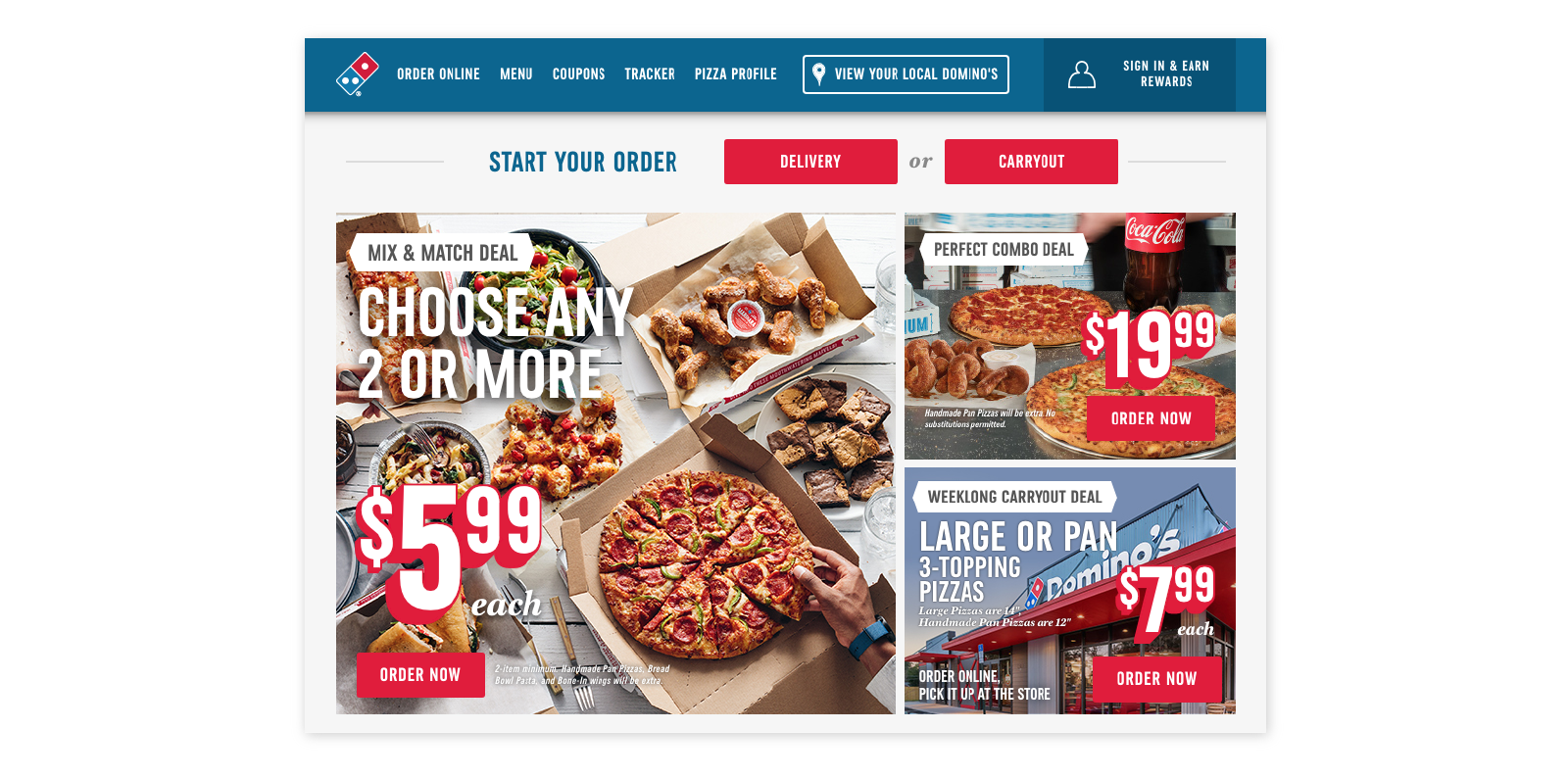
Online ordering systems like MenuDrive, Toast, ChowNow and Upserve are helpful for creating a streamlined and branded ordering experience. Monthly fees range from $90-$140. Your online ordering system should also sync with your POS system.
There is also a shift towards in-person technology options. Diners agree servers with handheld tablets improve the guest experience. With pay-at-the-table and order ahead options, guests don’t have to wait as long. There has also been a recent boom with online delivery services like Uber Eats, DoorDash, GrubHub and more. Many restaurants have implemented their own delivery services so if you’re still relying on in-person dining and your ticket sales have dipped, try something new! Keep customers happy by rolling out online and in-store tech improvements.
2. Pay Attention to Online Reviews
Online reviews are a powerful tool in the restaurant industry. According to a U.C. Berkeley study, In a nutshell? Spending a little time optimizing your Yelp or Tripadvisor account is worth the effort. Positive Yelp reviews can work wonders for your restaurant.
Claim your restaurant and build out your Yelp or Tripadvisor profile to include:
- High-quality photos of your food
- Hours and location
- Menus
- Price range
- Wi-Fi
- Outdoor seating
- Parking details
- Services provided (curbside pick up, delivery, etc.)
3. Target Customers in Your Area
Your restaurant’s location impacts your potential customer base, as well as your theme, menu and decor. Most customers come from within a 5-mile radius but on average, consumers say they will drive 17 minutes to visit a restaurant. Cost is also a factor. 38% of diners will travel over 10 miles if they know they will get a discount.
Your goal should be to rank among your local competitors or within the top 3 spots that show up when users search for a specific keyword like “best tacos.” The 3 taco shops listed below will receive the most traffic simply because they are the top results users see for that area.
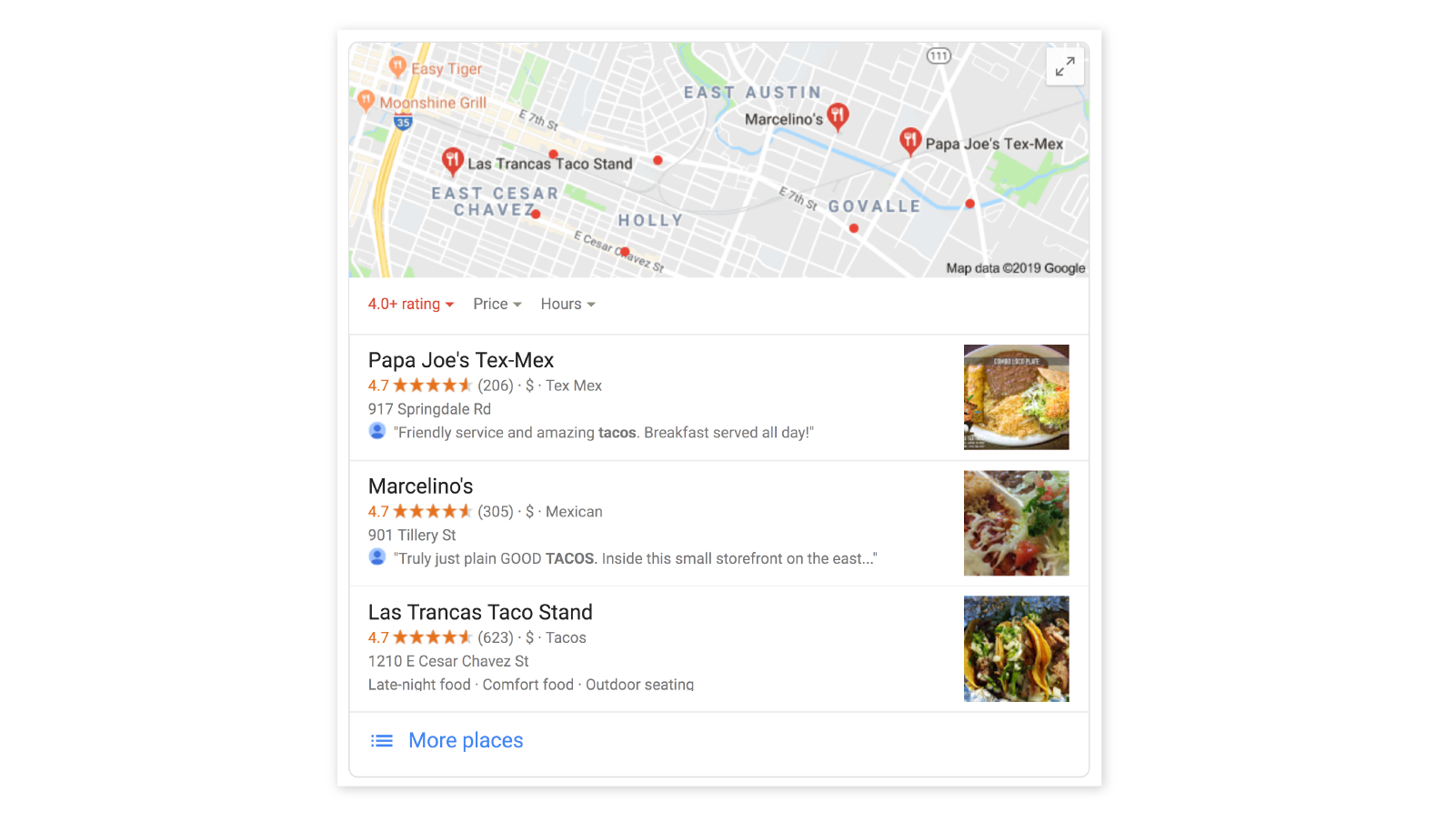
Tips to rank in those top three spots:
- Build positive reviews on Yelp, Tripadvisor, Google, Facebook and other sites and frequently respond to your reviews.
- Claim your business listing and ensure your restaurant information is consistent on Google My Business, Yelp, Tripadvisor and other review sites.
- Update your website frequently with menus or promotions.
4. Shift Toward Healthier Menu Options (and Promote Them)
According to Consumer Trends, people reward restaurants that demonstrate a commitment to quality ingredients. In fact, 70% of diners say they’re more likely to choose a restaurant that offers healthy menu options.
Consumers will even pay more for healthier or organic food options – especially the younger generations. 68% of millennials say they’re willing to spend more money on high-quality food.
Even if your restaurant menu isn’t known as “healthy,” consider using feature-benefit selling to help promote your items. Highlight specific features of your dishes and how they’re beneficial for your customers.
For example, if you offer plant-based milk, promote your almond milk latte for breakfast-goers who may be lactose-intolerant. Or, if you partner with a local farm for fresh seasonal veggies, promote local, seasonal and organic options both on your menus and in your social media posts.
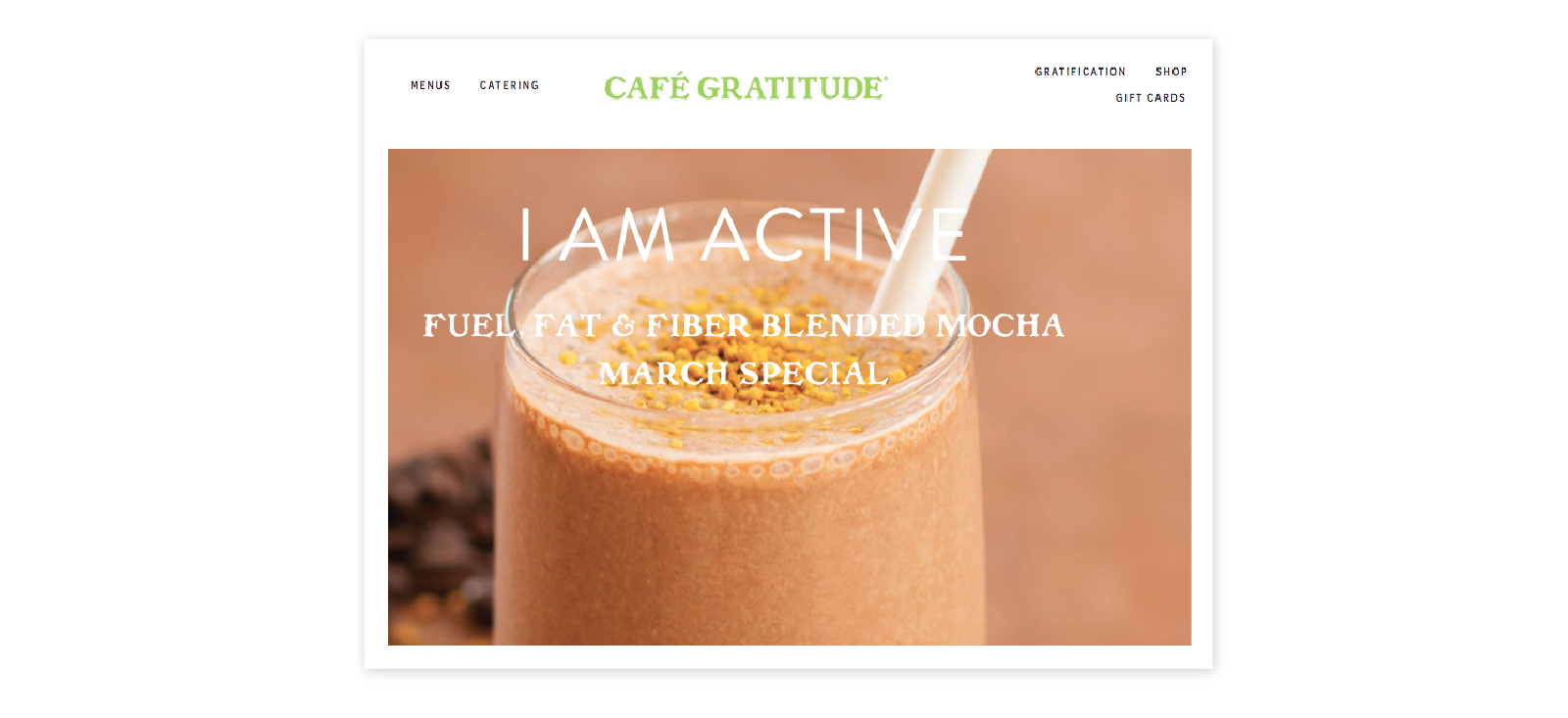
Consider working in menu items that appeal to those who are vegetarian or vegan, allergy-sensitive or prefer to eat organic, local and seasonal foods. This shift is growing, as some of the biggest fast-casual operators have added plant-based fare in an attempt to increase sales and please a growing demographic.
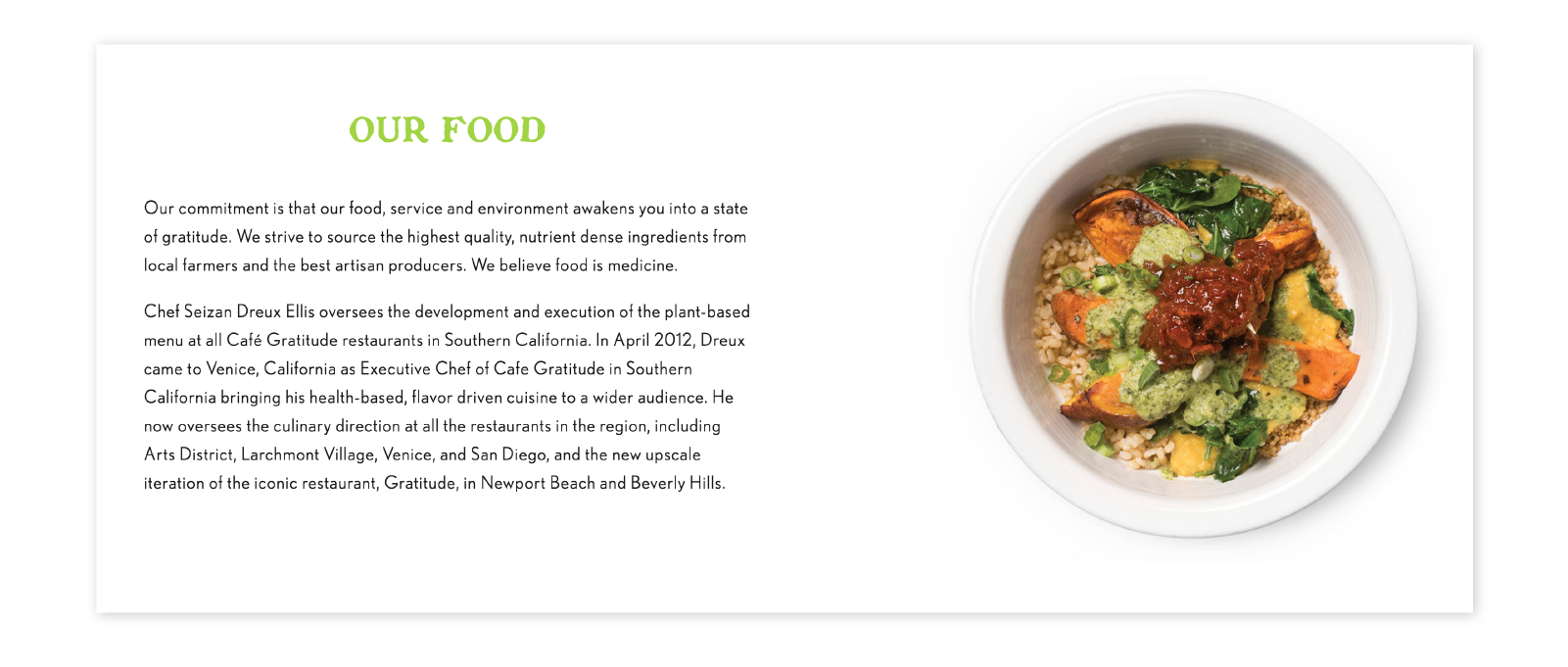
5. Be on Instagram. Period.
Restaurant operators report an increased use of Instagram for photo sharing can lead to more traffic.
Instagram is a great place to show off high-quality photos of your food and space. You can engage with your audience and check out customer photos in one platform.

Include images of your location and offerings for customers so they know what to expect before visiting or placing an order. Promote a special dish, sale or partnership to generate buzz. Or, share some behind-the-scenes action of your chef putting the finishing touches on a dish.
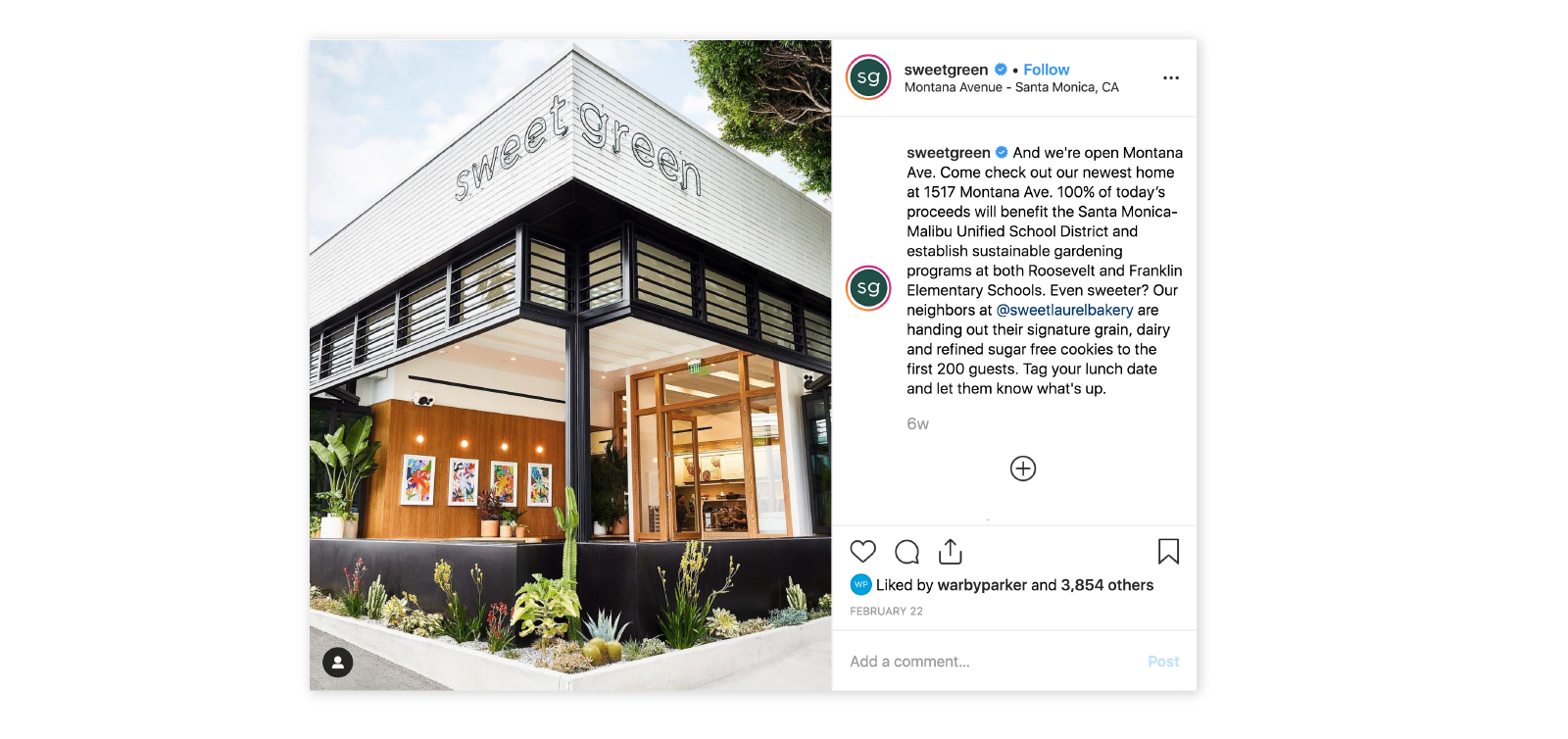
Other Instagram post ideas:
- Food photos posted by guests
- Funny or inspiring quotes
- Sneak peeks at upcoming menu items
- Day in the life of one of your staff members
- Memes/GIFs
- Contests
- Promotions you’re running
6. Sell a Unique Dining Experience
79% of adults say they would rather spend money on an experience, such as a restaurant or other activity, compared to purchasing an item from a store.
From color schemes and furniture choices to background music and lighting design, each choice made in your restaurant can help you craft an inviting environment. Make choices that reflect the character of your brand and how it’s special.
Beyond just decor, think about function. Get guests out of their comfort zones with communal seating. Or, set up a game area complete with shuffleboard or cornhole.

7. Target Food Bloggers and Influencers
According to a recent study, consumers search online for restaurants more than any other industry. 81% of consumers have searched on a mobile app and 92% through a browser in the past 6 months. Three-quarters of these consumers say they choose a restaurant based on the search results. If you’re a new restaurant, it can be tough to generate a strong web presence with initial reviews and buzz about your business. One way to do this is to invite food bloggers to your restaurant.
Find relevant influencers through a social media management system like Hootsuite, Sprout Social or Buffer. Below are a few tips on what to look for in a brand partner:
- Look for local bloggers – A celebrity blogger with a national following won’t drive the same foot traffic as a foodie in your local area.
- Search for high engagement rates – Aside from follower count, look for the influencer’s average engagement rate. If only 2% of their 100k followers actually like or comment on posts, the partnership may not be worth the cost.
- Confirm the blogger’s brand voice – Make sure your restaurant values align with the influencer’s messaging and aesthetic for an authentic review.
Or, look up specific hashtags on Instagram and see which accounts come up. Reach out to a blogger with an offer for a free appetizer or meal, then simply ask them to share an honest, objective review with others.
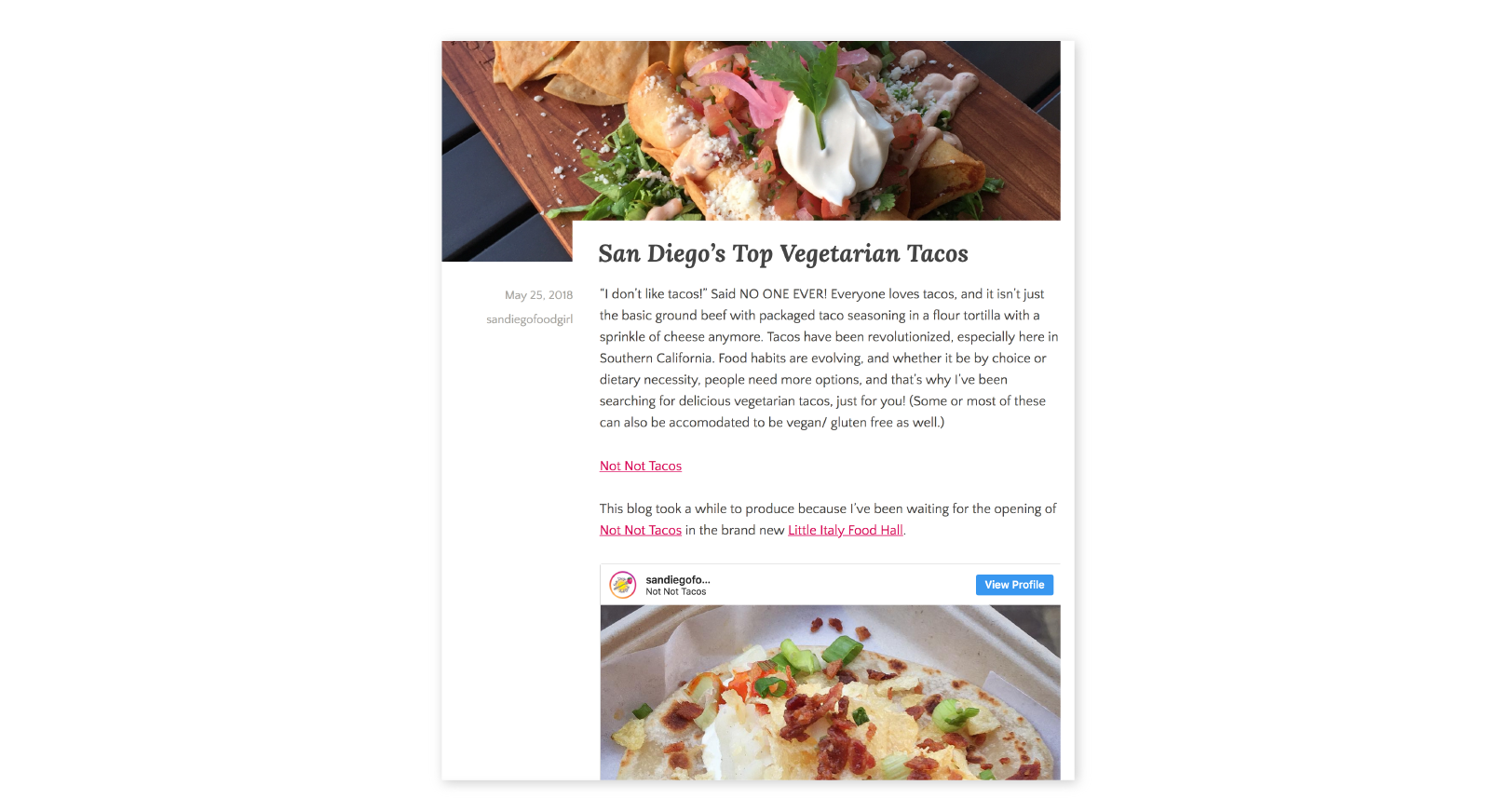
While you can’t guarantee the outcome, getting more information out there will help increase the buzz and interest for your restaurant. Some influencers have huge followings and this strategy can lead to big results.
8. Take Advantage of Foodie Events
The list of food holidays is truly never-ending. There are so many opportunities to get creative, from National Pizza Day to World Nutella Day.
Use holidays or big events to your advantage by planning a social media contest, promotion or discount around a specific food. A marketing calendar is helpful for planning and organizing opportunities.
The busiest restaurant holidays for the industry are Mother’s Day, Valentine’s Day and Father’s Day. But there are plenty of food-centric holidays year-round that you can capitalize on:
- National Pizza Day – February 9
- Pi Day – March 14
- National Barbecue Month – May
- National Cheeseburger Day – September 18
- World Vegetarian Day – October 1
- National Taco Day – October 4
- National Dessert Day – October 14
- National Sandwich Day – November 3
- National Fast Food Day – November 16

Sources: Valpak 2020 AdMall AudienceSCAN® | Toast

